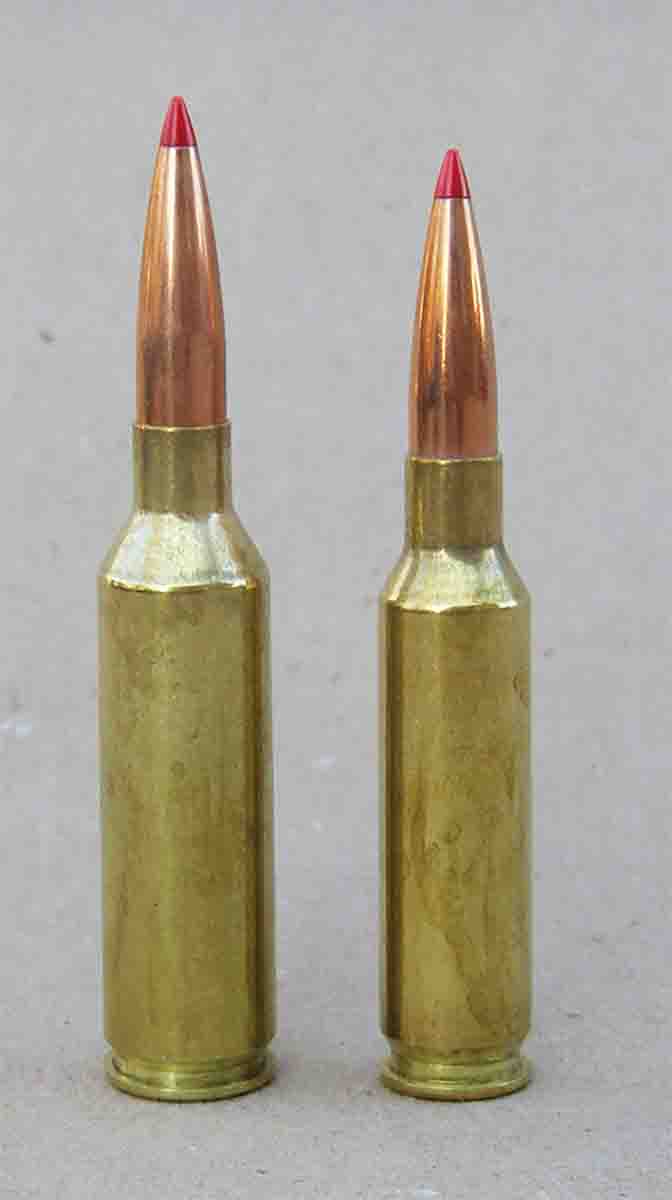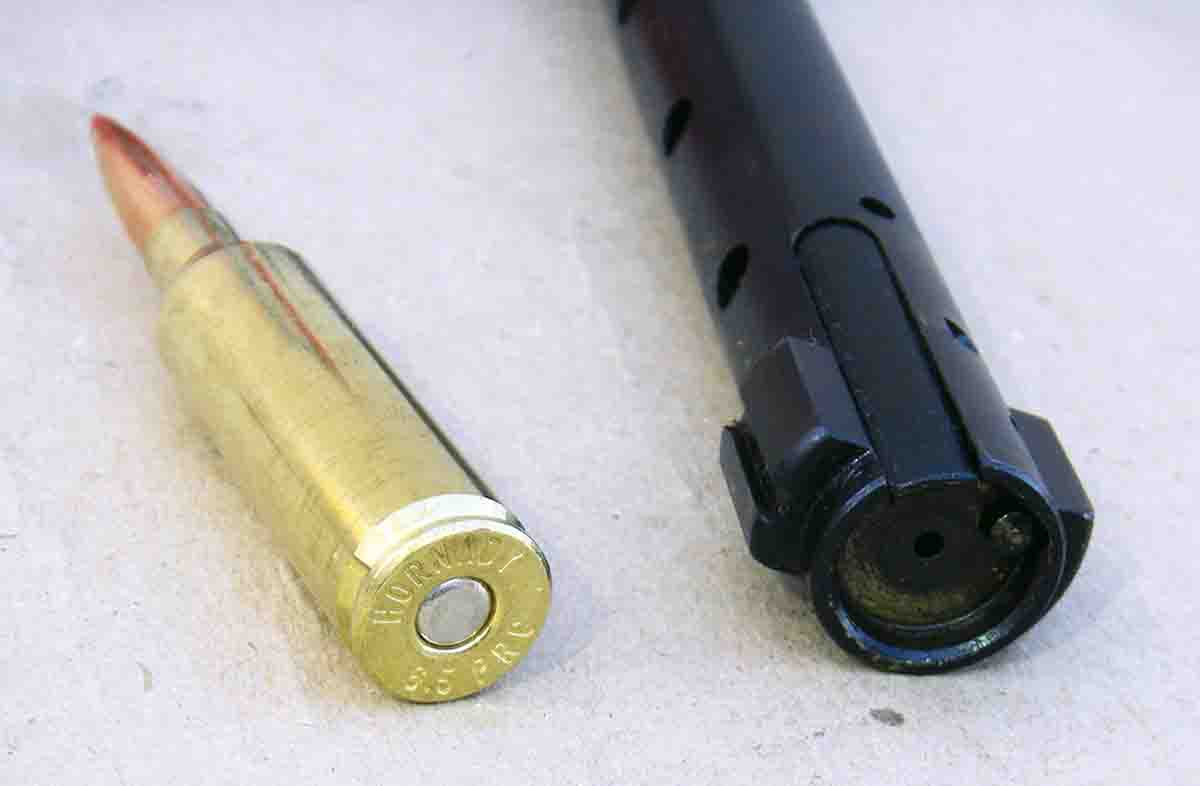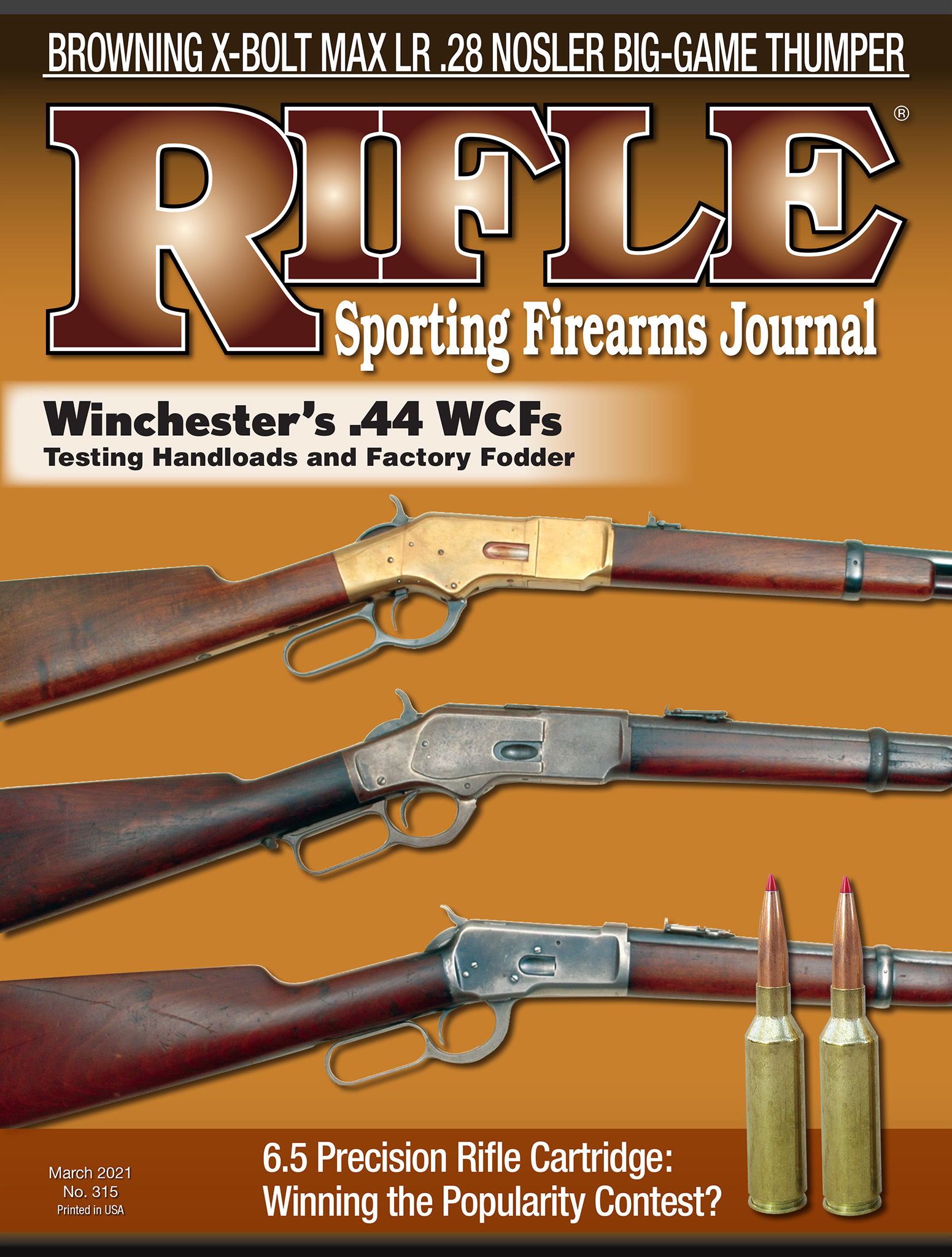6.5 Precision Rifle Cartridge
Winning the Popularity Contest?
feature By: Brian Pearce | March, 21


A total failure (mostly for good reason) appeared as the 6.5 Remington Magnum in 1966, which was oddly chambered in a short-barreled carbine that limited performance, and sales were very soft. The .260 Remington (6.5-08 A-Square) was introduced in 1997. It is a good cartridge, but it was not properly marketed; the barrel twist should have been faster and there were other technical issues that limited its popularity. The 6.5-284 became a wildcat in 1963 and target shooters quickly discovered its many virtues in long-range target competition. Norma introduced it as a CIP cartridge in 1999, and just recently The Sporting Arms and Ammunition Manufacturers’ Institute (SAAMI) standardized it. But in spite of offering excellent ballistics for hunters, along with modest recoil and top accuracy, its popularity has not been mainstream.


It is interesting that for the first several years the average shooter or hunter could be asked his opinion of the 6.5 Creedmoor and most had not even heard of it. At first, it only received modest press; however, when it started to dominate in various target competitions, its popularity quickly soared to nearly unheard of levels. Many hunters took it afield with good results. However, due to its reputation as a long-range target cartridge, it has also been pressed into service as a long-range hunting cartridge.
The 6.5 Creedmoor is generally listed to push cup-and-core, 120-grain bullets at 2,910 fps, a 129-grain SST at 2,950 fps or various 140- to 143-grain bullets at around 2,700 fps. In spite of generally being loaded with bullets featuring a high BC that translates into impressive downrange velocities, a 6.5 cartridge with a bit more velocity, energy and a flatter trajectory for use in the field is certainly welcomed by this shooter/hunter. It too should be beltless and with the same modern features as the Creedmoor, but neither should it have such overbore capacity and velocity to be a barrel burner.


The 6.5 PRC is modern in every respect and has corrected many of the shortcomings of previous 6.5s that offered similar velocities. For example, the parent case is the .375 Ruger (developed and offered by Hornady in 2007), which is beltless and rimless. The head diameter measures .532 inch, which is the same diameter as the belt on the .375 H&H Magnum case. This permits it to be chambered in rifles with a “magnum” countersunk bolt face without modification. Similar to the Creedmoor, the shoulder angle is 30 degrees, which offers positive headspace control and aids with efficient powder burn. The rifling twist rate is 1:8, which allows it to stabilize modern, heavy-for-caliber bullets that feature a high BC, low drag and that typically weigh 140 to 147 grains. However, this fast twist will still stabilize bullets as light as 95 grains for varmint and predator hunters who often favor loads with especially flat trajectories. The PRC’s maximum average pressure is 65,000 psi.


Hornady is currently listing 6.5 PRC factory loads with a 143-grain ELD-X bullet at 2,960 fps and the 147-grain ELD Match at 2,910 fps. While I generally avoid making comparisons, however, it seems appropriate here. The 6.5 Creedmoor lists the same bullets at 2,700 and 2,695 fps, respectively, with the PRC offering a 260- and 215-fps advantage. With each load and cartridge being zeroed at 100 yards, at 500 yards the PRC drops 43.4 inches and 44.1 inches, respectively, while the Creedmoor drops 54 and 52.7 inches. While the difference is not huge, when hunting in open country the PRC offers a distinct advantage that seems very useful to this experienced hunter. This advantage grows significantly as the distance increases. For example at 1,000 yards (not that I would shoot game at that distance) the 143-grain ELD-X drops 325.2 inches and is traveling 1,478 fps from the Creedmoor, while the PRC drops 262.8 inches and is traveling 1,654 fps.

.jpg)
For this feature, a Howa Model 1500 Lightning USA was selected, which is modestly priced and is a good rifle. This particular model comes with a comparatively lightweight, free-floating 24-inch barrel measuring .596 inch at the threaded muzzle. The stock is a classic pattern with a rather pronounced pistol grip that is comfortable when used in a variety of shooting positions that range from offhand to prone. The action is secured to the stock via two guard screws, with both being aluminum pillar bedded. The receiver also features a generous recoil lug. The bolt features twin locking lugs that result in a 90-degree bolt lift, while the bolt face is countersunk and houses a plunger ejector. The extractor is a rotating Sako-style which has proven reliable. Naturally, the design results in a push-feed system. The sliding safety, located to the right of the bolt shroud, features three positions and works positively. The two-stage trigger is housed and broke at just over 2.5 pounds right out of the box. The floorplate is hinged and is constructed of alloy. Other than the alloy bottom metal, the Howa 1500 features a simple design with robust construction. It is a no-nonsense design. It fed cartridges, fired and ejected cases reliably and gave flawless function.

Howa barrels are constructed of high-quality chrome-moly steel and are cold hammer forged to help prevent warping during manufacture. They are also closely scrutinized to assure they are straight and that surface condition is smooth. Time was taken to perform a barrel break-in procedure by cleaning all copper fouling after each round fired for the first 10 shots. For the next 10 shots, two rounds were fired between cleanings, with a light coat of synthetic oil being placed in the bore after each cleaning. At no time was the barrel heated up during this break-in period. This all serves to season the bore and develop a “home registration point” for the barrel.
In spite of the above barrel break-in, it took an additional 60 to 70 shots for the rifle to begin to settle, and groups began to really tighten. Using Hornady’s Precision Hunter factory load containing the 143-grain ELD-X bullet, several three-shot groups measured just under an inch; however, moving to the 200-yard targets, groups consistently measured between 1.25 to 1.5 inches. Changing to Hornady Match loads containing the 147-grain ELD Match bullet, group size was more or less identical at both 100 and 200 yards, with no practical difference in accuracy between the two loads. Switching to HSM Trophy Gold ammunition containing the 140-grain Berger HPBT VLD bullet, three, three-shot groups averaged 1.67 inches.


While the 6.5 PRC thrives on long, heavy-for-caliber bullets, it can also push varmint bullets to high velocities. For example, in developing handloads using the Hornady 95-grain V-MAX bullet, 62.0 grains of Hodgdon H-4350 powder reached over 3,600 fps, which offers a flat trajectory at normal varmint shooting distances. Another load that should interest deer hunters includes the Hornady 129-grain SST bullet pushed to over 3,200 fps using 58.5 grains of H-4350 powder. With a 100-yard zero, at 400 yards it drops 20.6 inches.
As is usually the case, factory load performance can also be improved. For example, using the Hornady 143-grain ELD-X bullet, 57.5 grains of Alliant Reloder 26 powder reached 3,030 fps – some 90-fps faster than “listed” velocities of factory loads with the same bullet.
The 6.5 PRC is a great cartridge that is quickly becoming popular, but it is finding particular favor among hunters that want just a bit more performance than its smaller sibling. A few of its advantages include reduced time of flight, flatter trajectory, extended distance at which it will reliably expand bullets, etc., all without sacrificing accuracy. It offers unusually high efficiency (when compared to the powder charges required in most other cartridges that offer similar velocities) and it was designed specifically for a host of modern low-drag 6.5mm bullets. Time will tell, but it appears that the PRC’s popularity is going to go the distance.



.jpg)